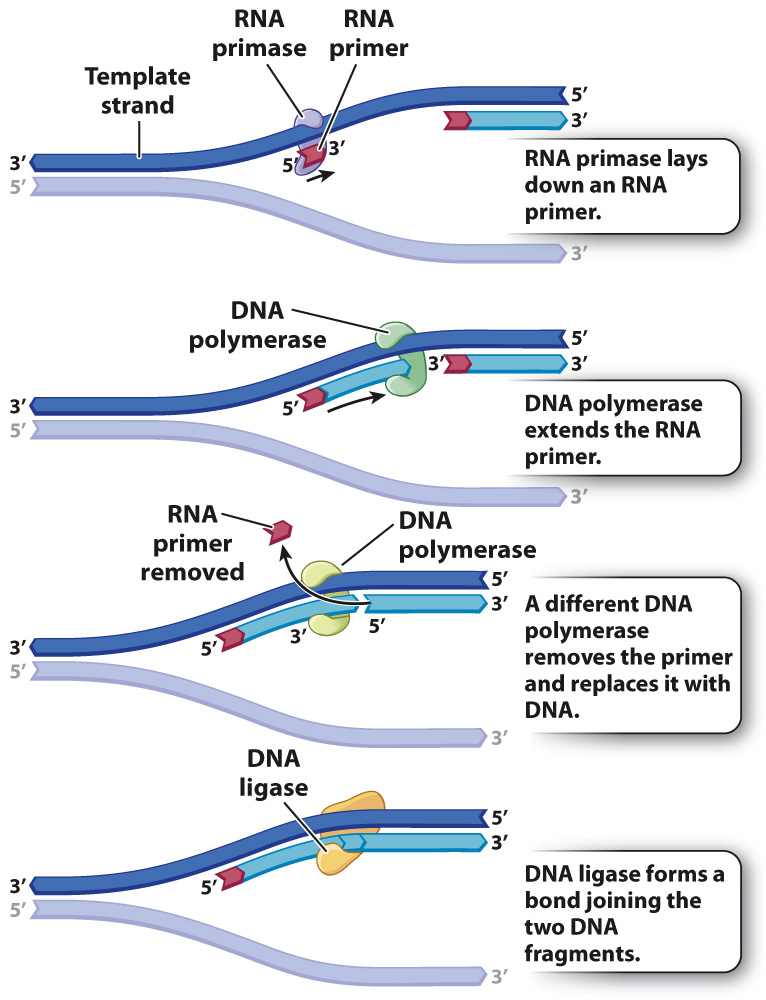A small stretch of RNA is needed to begin synthesis of a new DNA strand.
Each new DNA strand must begin with a short stretch of RNA that serves as a primer, or starter, for DNA synthesis. The primer is needed because the DNA polymerase complex cannot begin a new strand on its own; it can only elongate the end of an existing piece of DNA or RNA. The primer is made by an RNA polymerase called RNA primase, which synthesizes a short piece of RNA complementary to the DNA template and does not require a primer. Once the primer has been synthesized, the DNA polymerase takes over and elongates the primer, adding successive DNA nucleotides to the 3′ end of the growing strand.
Because the DNA polymerase complex extends an RNA primer, all new DNA strands have a short stretch of RNA at their 5′ end. For the lagging strand, there are many such primers, one for each of the discontinuous fragments of newly synthesized DNA. As each of these fragments is elongated by DNA polymerase, it grows toward the primer of the fragment in front of it. When the growing fragment comes into contact with the primer, a different DNA polymerase complex takes over, removing the RNA primer and extending the growing fragment with DNA nucleotides to fill the space left by removal of the RNA primer. When the replacement is completed, the adjacent fragments are joined, or ligated, by an enzyme called DNA ligase. This process is illustrated in Fig. 12.6.
